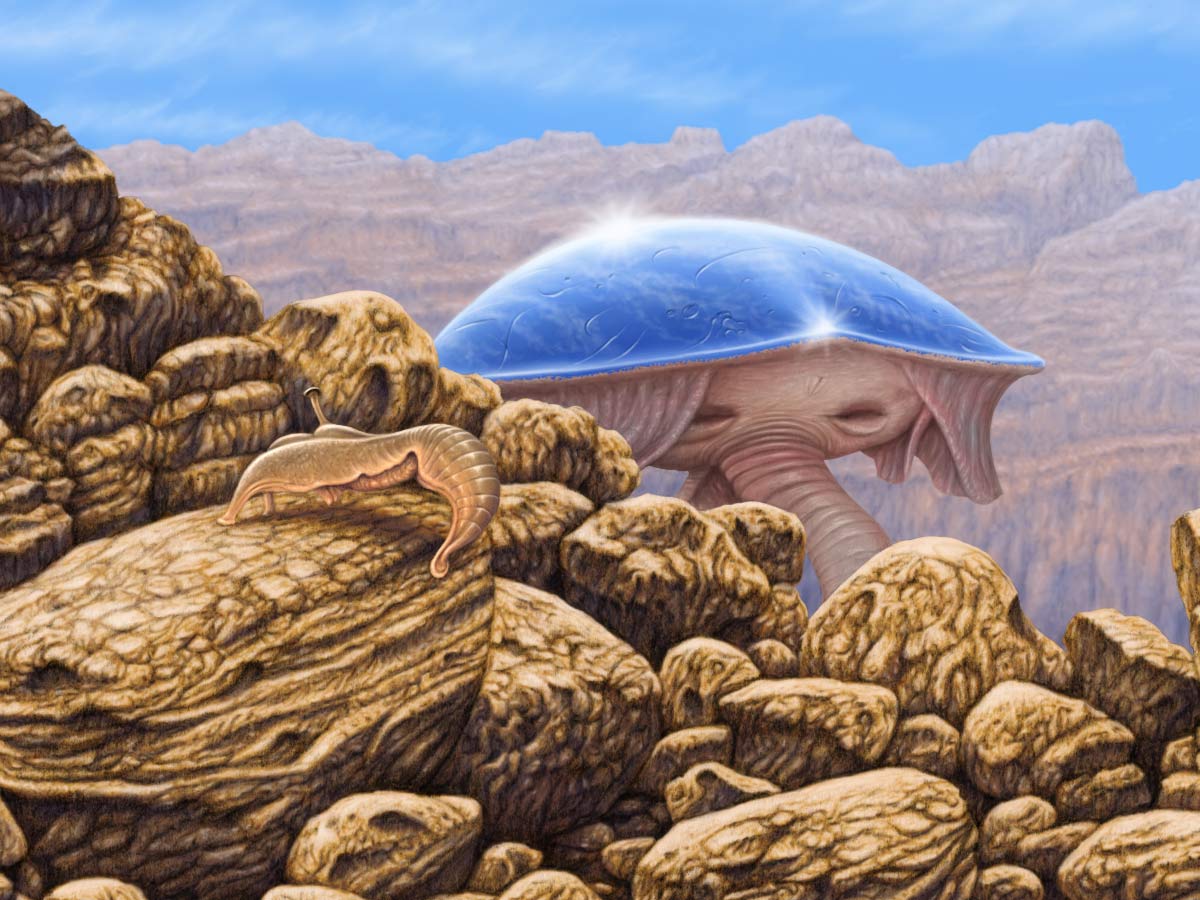The High Desert
A land of extremes.
Even in the most unforgiving environments, life finds a way.
Most clouds have depleted their stores of rain by the time they make it to the center of the continent. In some places, high mountain ranges block precipitation even further, contributing to the desertification farther inland. Despite a relatively dense atmosphere conducive to moisture distribution, Veteris still hosts some very parched places. The thick air also traps a large amount of heat, so deserts tend to lose any water they have quickly through evaporation. Despite all these factors working against its very existence, life in Veterian deserts is plentiful, diverse, and extremely well-adapted.
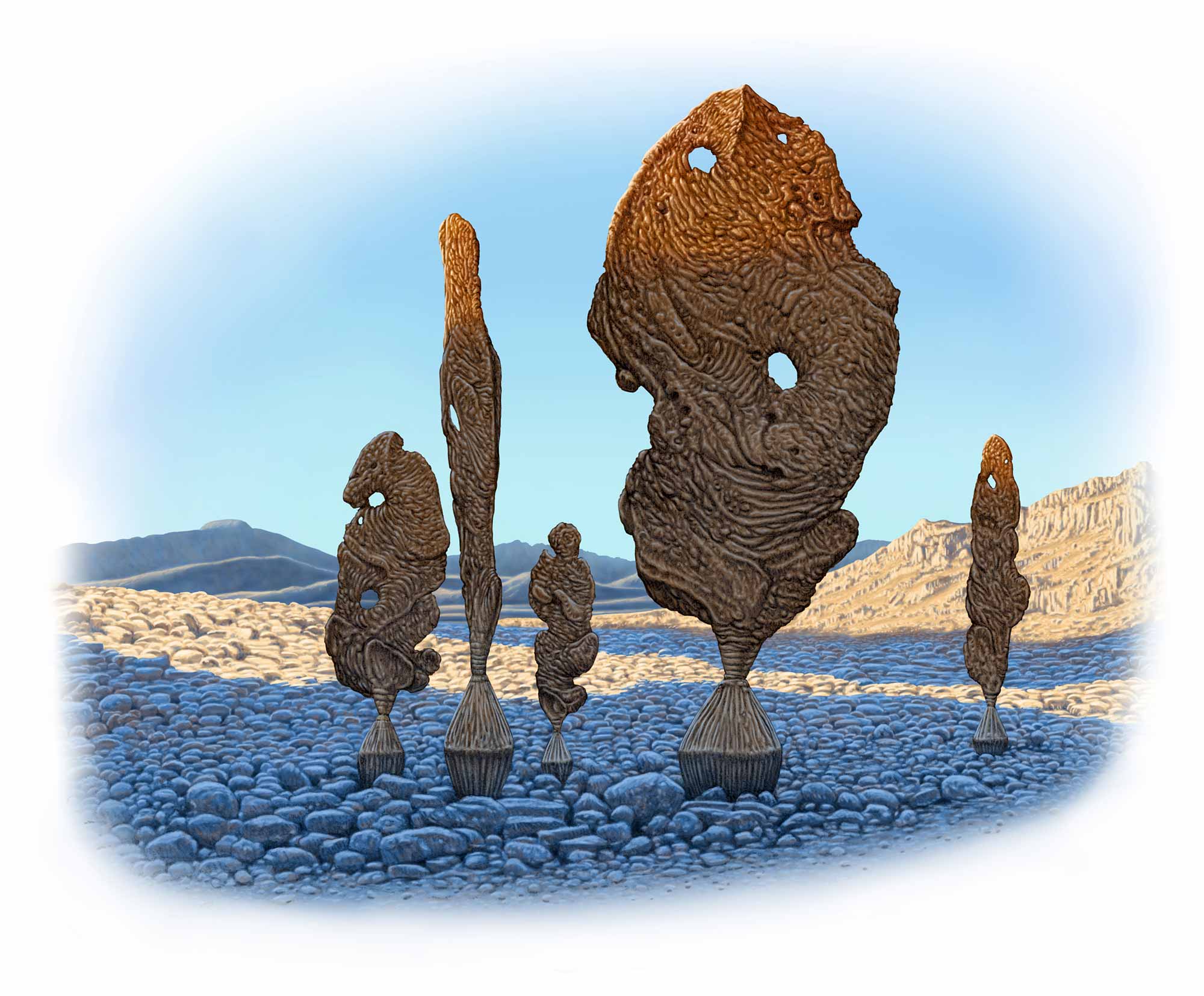
A common site in these dry rocky areas is the Velumignus. Their immobile bases send tendrils deep underground in search of water, while the photosynthetic flattened upper portions can swivel to accommodate for light and wind direction. Reaching a height of over fifteen feet, these silent sun-catchers often serve as way-finding posts to creatures journeying through the High Desert.
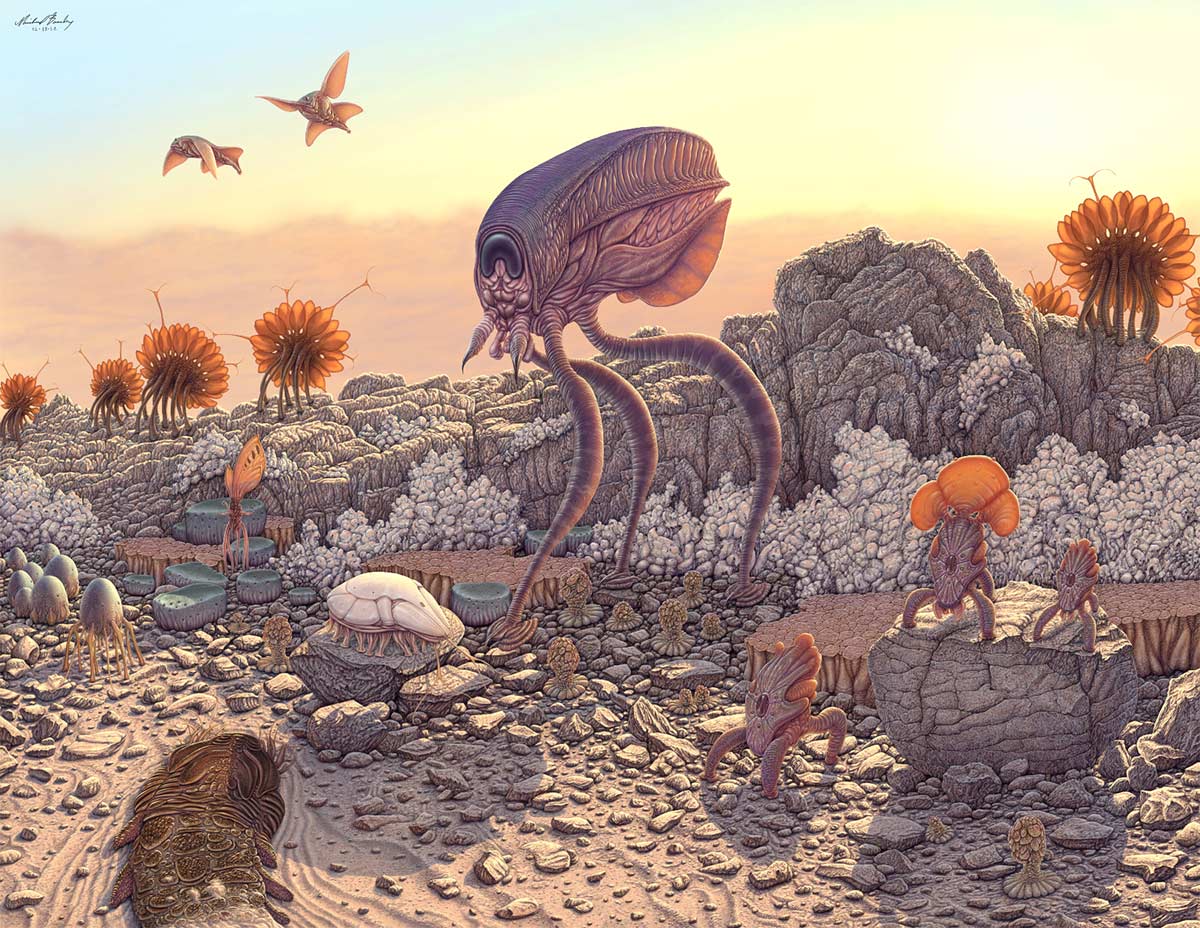
First Light
2022, digital
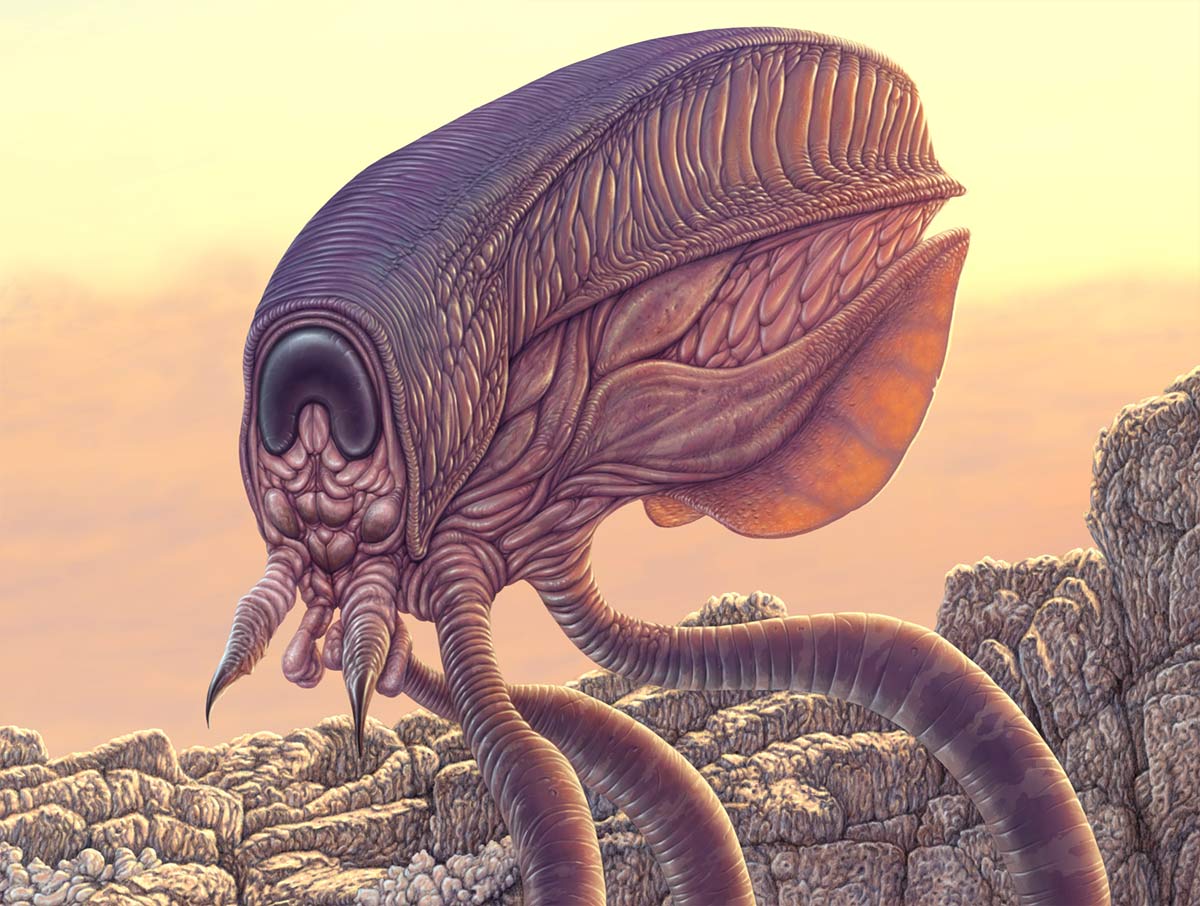
Cycloptic Night-Seeker
Dawn breaks in the desert.
A scurrying frenzy of creatures is returning to shelter after the night’s mischief. Tallest among them, the Cycloptic Night-Seeker surveys the scene looking for any last morsel of food before the day’s solar onslaught forces its retreat into shadow. The Testapallidus at its feet may prove an ideal treat, unless the sand-swimming Armored Loricatus captures it first. Though the Testapallidus’ hard dorsal shell protects it from most threats, the Night-Seeker possesses a keen intellect, curious disposition, and two formidable front appendages that are as dextrous as they are sharp.
Usually too quick for the large hunter, a trio of gregarious Desert Sentinels are more concerned with ambush predators such as the Loricatus, and one inflates its signaling air sacs in alarm. Already, members of the desert’s daytime cast are making an appearance. Luteos have positioned themselves at the top of the ridge to greet the first slanted rays. Relying on photosynthesis for a large portion of their metabolism, they tilt their bodies to follow the sun throughout the day. In a short time, more heat-tolerant daylight denizens will take the stage and play out their part in the everyday drama of the high desert.
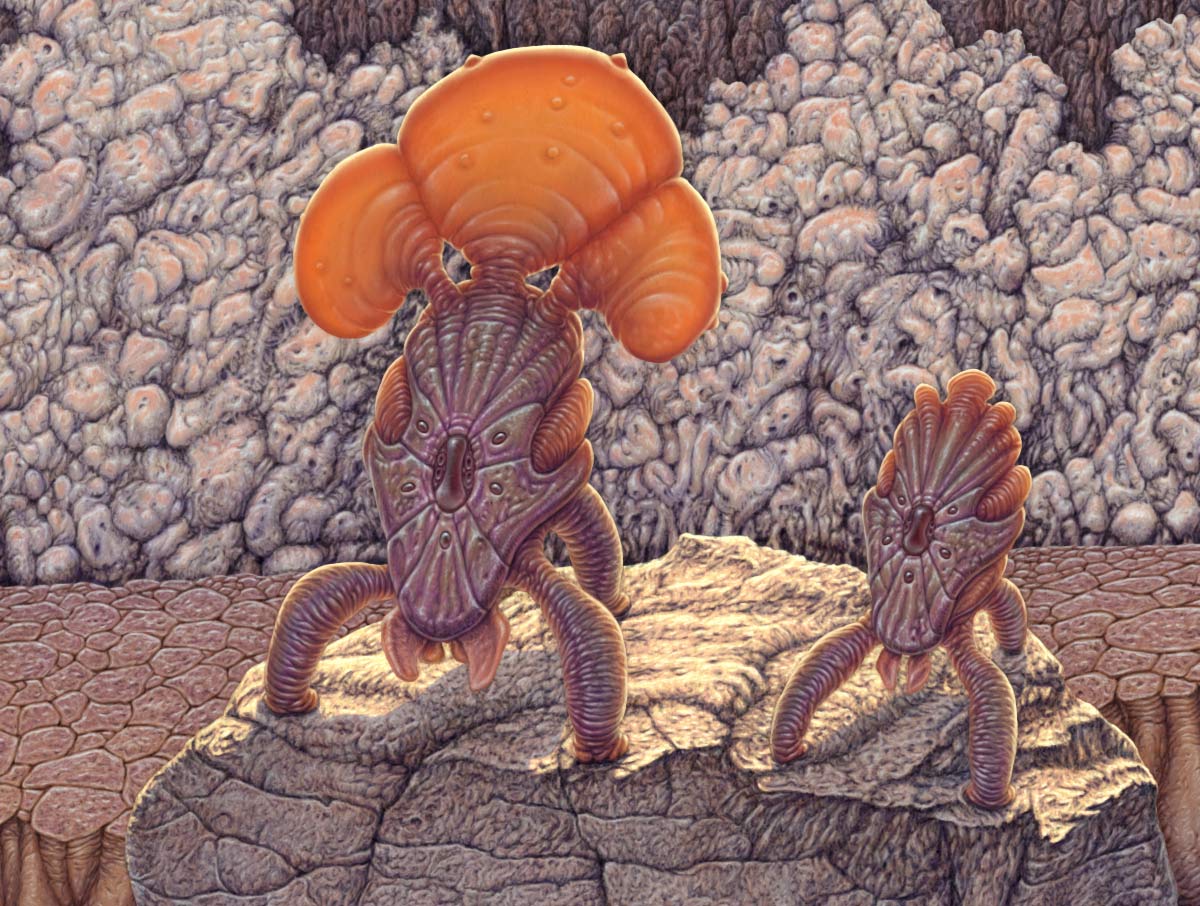
Desert Sentinels

Monolith
2020, digital
The seasonal rains have finally arrived.
Among the first to respond is the monolith. Primitive eyes along its sides detect the glint of sunlight off the surface of the water, and inform the direction to send out tendrils. These thick, fleshy tubes extend slowly to the shallow pools left over form the rain, and suck up as much water as can be held in the monolith’s main body. After the puddle has been absorbed, the tendrils either contract, or if damaged, whither and die. The monolith may only drink in this way two or three times a year, but it’s enough to keep it alive during dry times. Having started life in a mobile stage, the monolith searched for a location close to a pool, and gave up locomotion for a life of sedentary dignity and grandiose size.
Additionally, the rains signal the arrival of the transparent fliers, known as Nox, which are attracted by the monolith’s biolights. Nox use an internal cavity within the monolith to roost during the day and rear their young. In return, the monolith gets a constant supply of nutritious waste products and discarded food. Each nox recognizes the unique pattern of biolights on their home monolith out of the crowd of others which often congregate along the temporary creek beds.
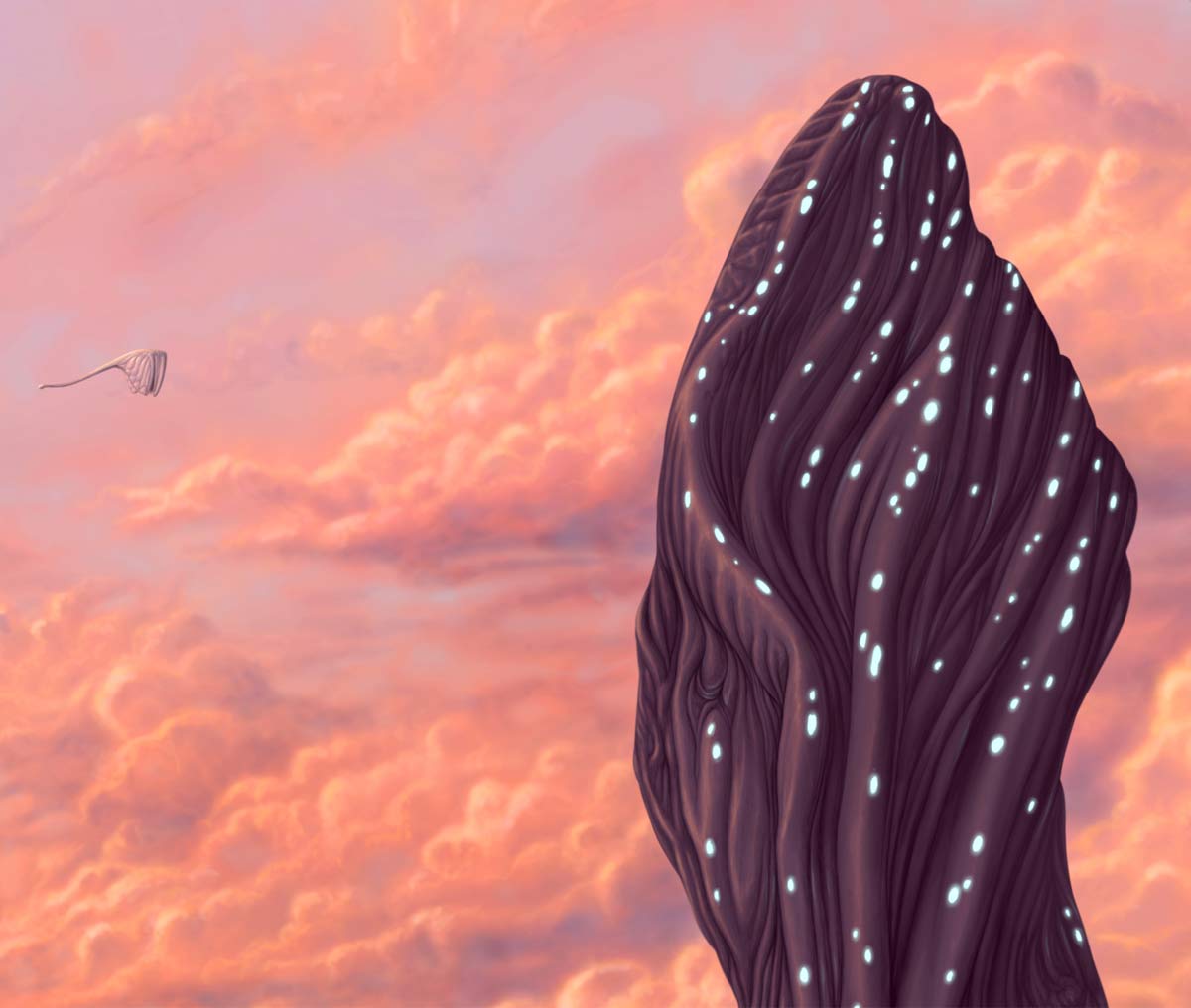
Nox
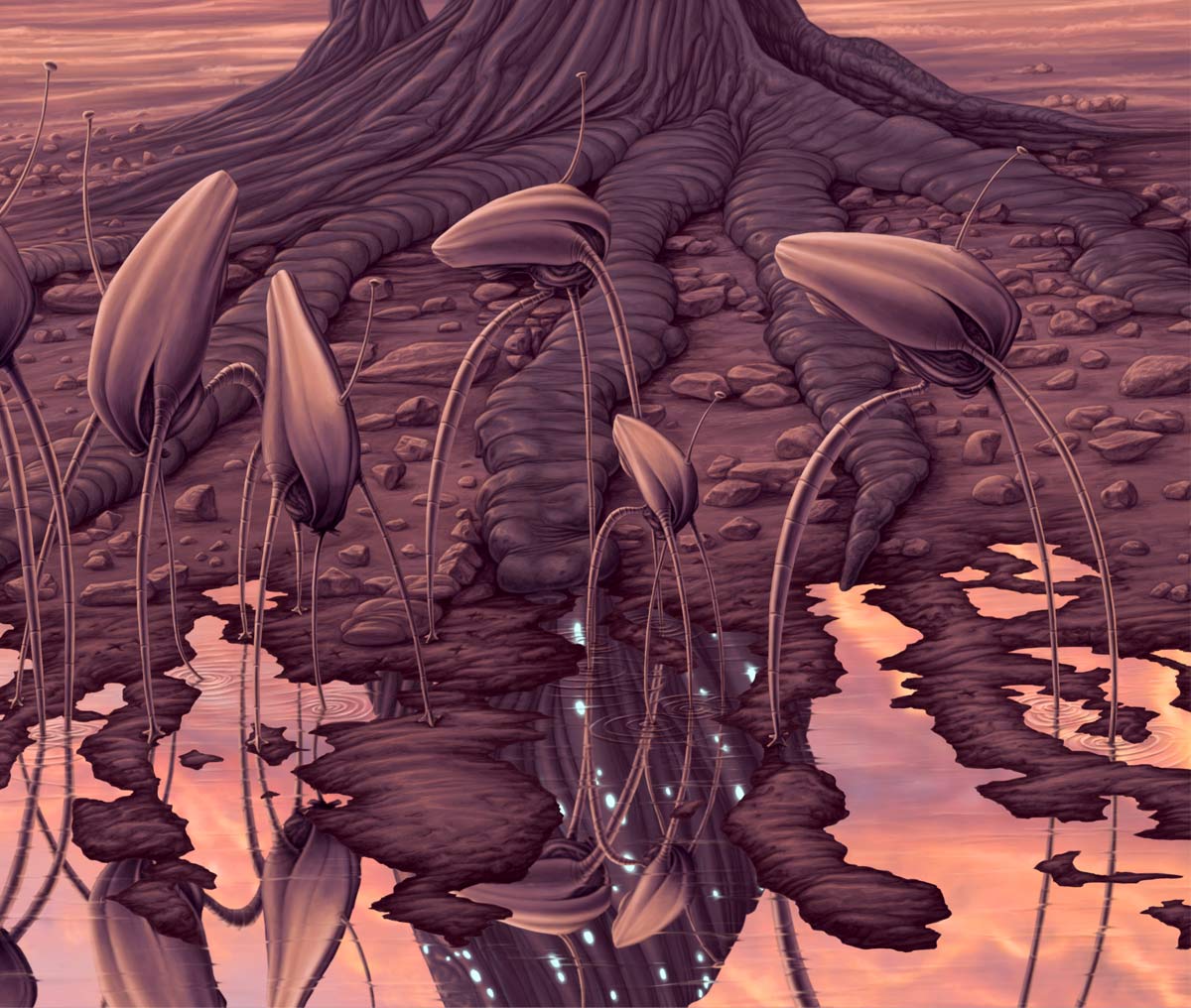
Desert Runners
The allure of water draws in other travelers as well. A close cousin of the Tripodal Plains Runner, the Desert Runner is a slimmer, more plainly-colored species adapted for nomadic life in these dry lands. Moving swiftly over the desert landscape in loose herds, they opportunistically search for any organic material they can consume. It pays to be a generalist in these harsh realms, and the runners survive here with a combination of a highly efficient body plan, indefatigable curiosity, and sheer endurance.
Creatures of the Desert
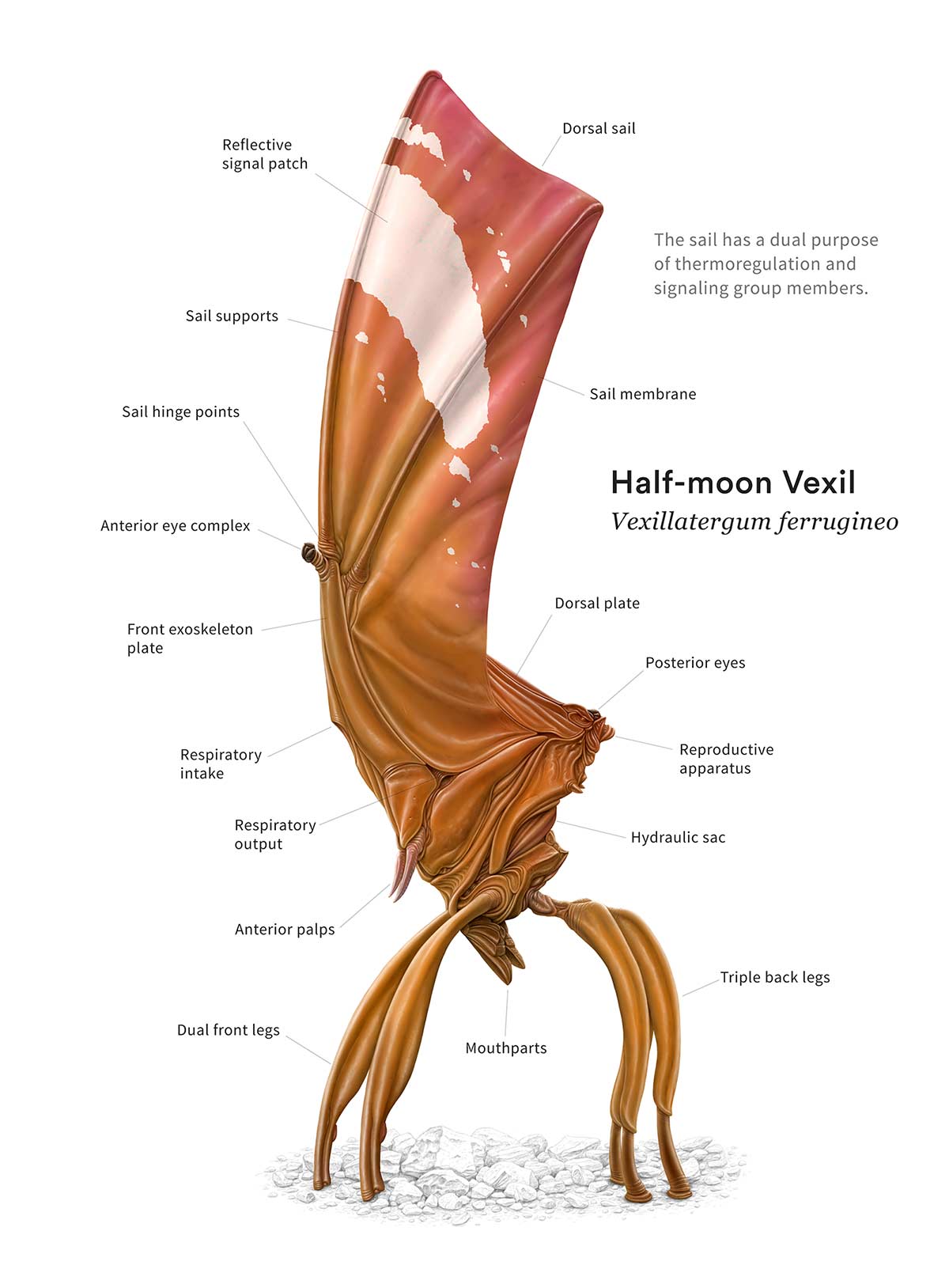
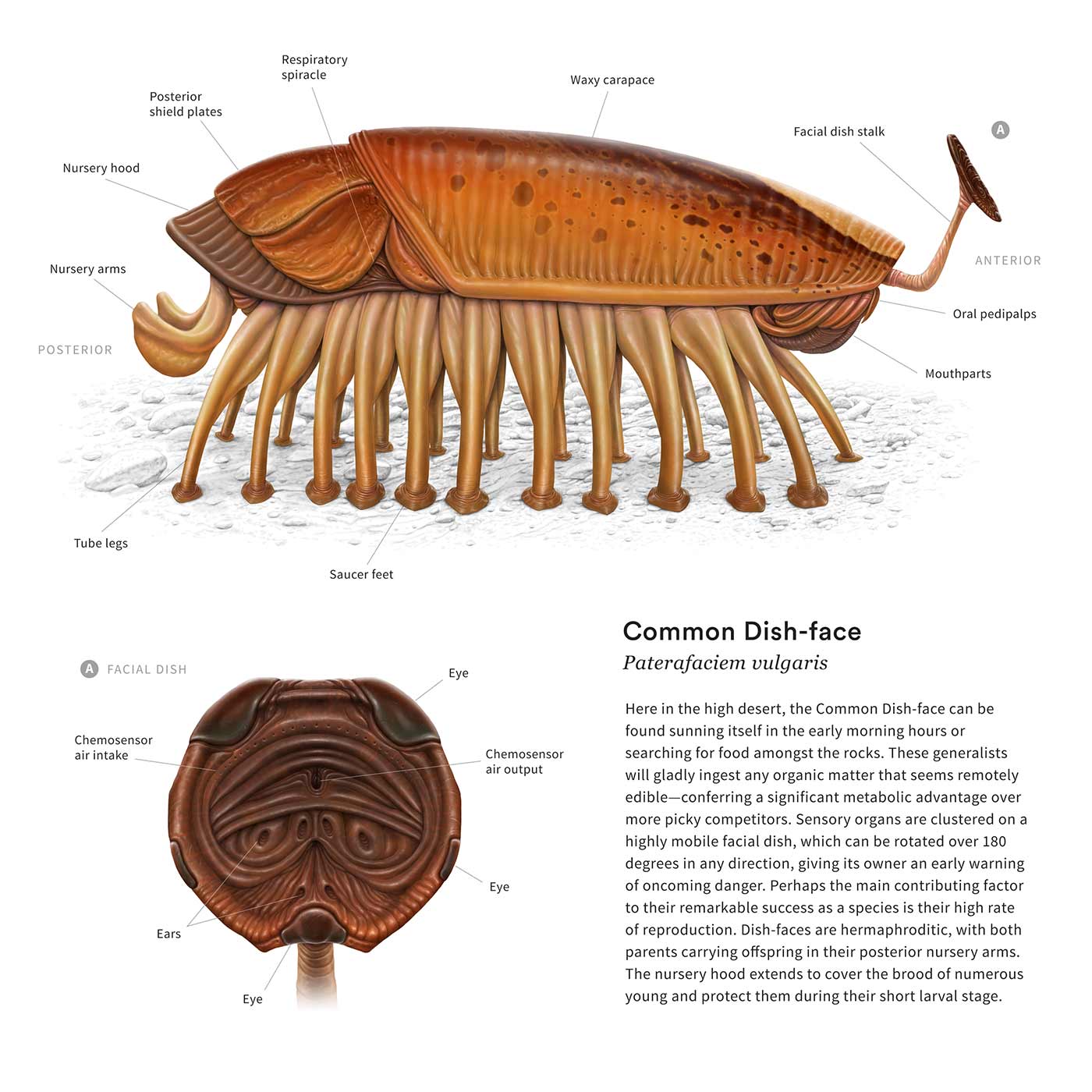

Kings of the High Desert
2022, digital
A herd of strange creatures has congregated on this rocky outcrop.
Known as Emperor Shinebacks, they often climb these rugged foothills to obtain access to cooling breezes and additional food sources. Their top-heavy tripodal stature prevents further ascension into the mountains, but it serves them well on more level ground. Reflective carapaces mitigate much of the sun’s harmful rays, and cooling flaps along their flanks dissipate excess heat. A shineback’s normal gait is rather clumsy, but when haste is needed they clamp all three legs together into a single monopod and bounce effortlessly across the desert at remarkably high speeds. This combined with their massive size (adults are over eight feet tall) and protective social behavior makes them almost impervious to attack. Almost…
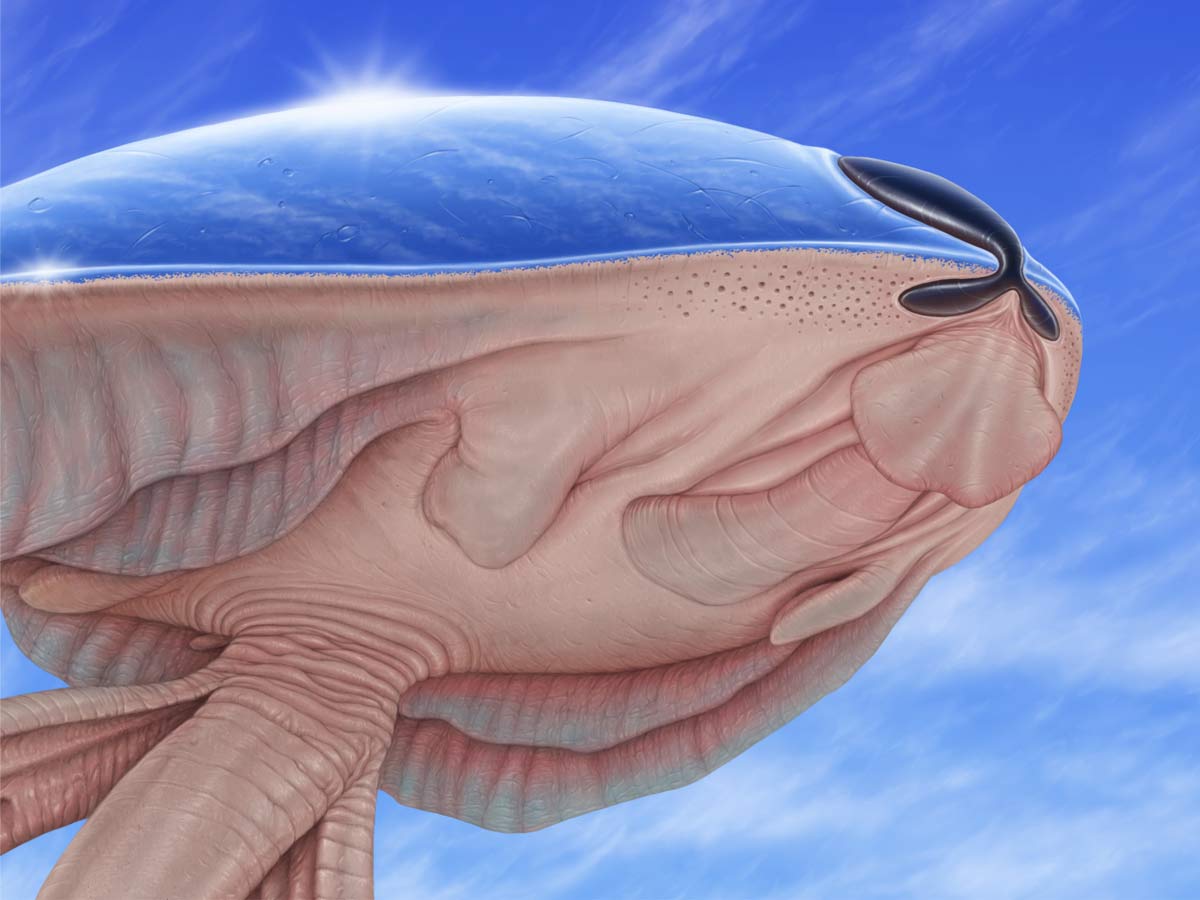
Emperor Shineback
